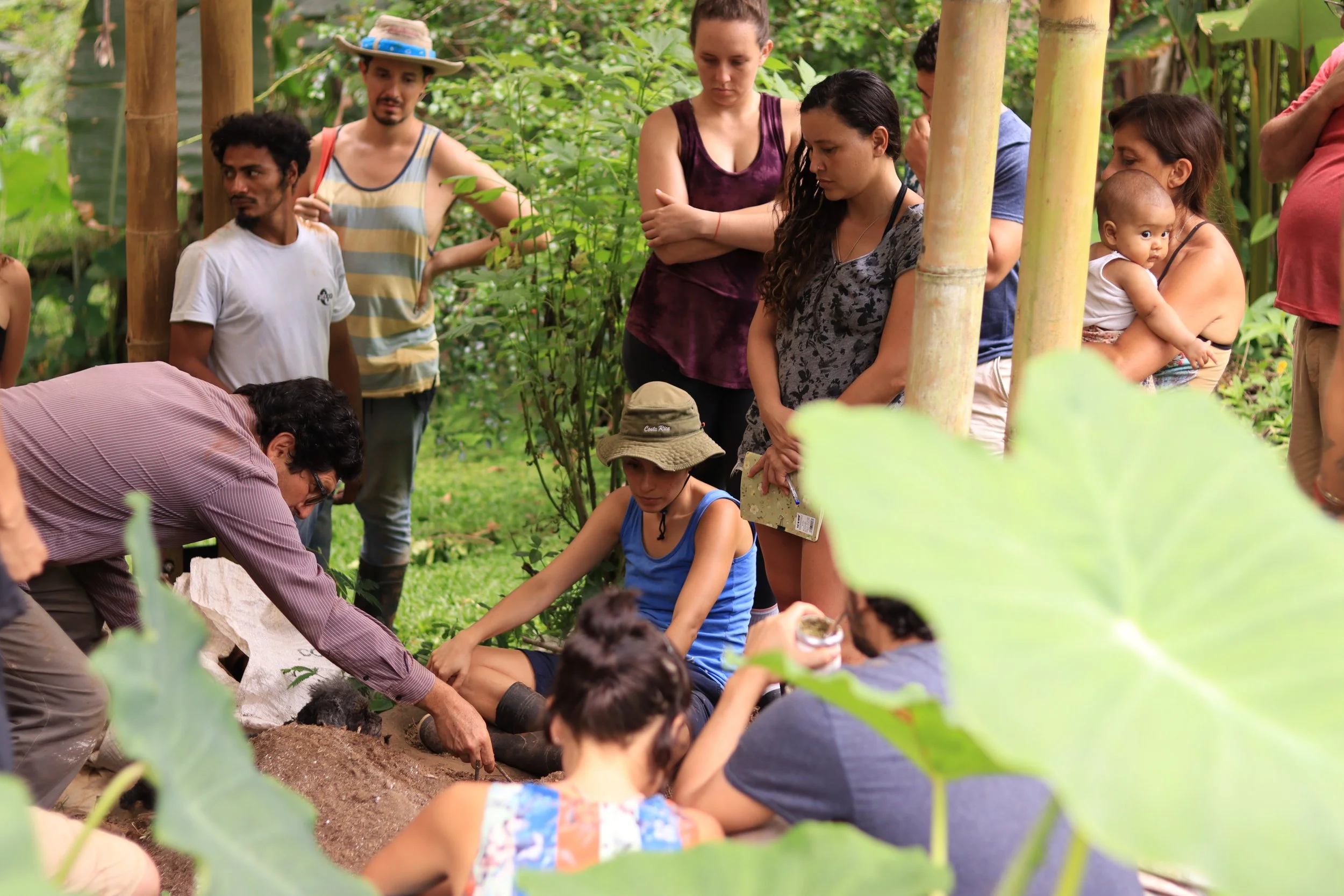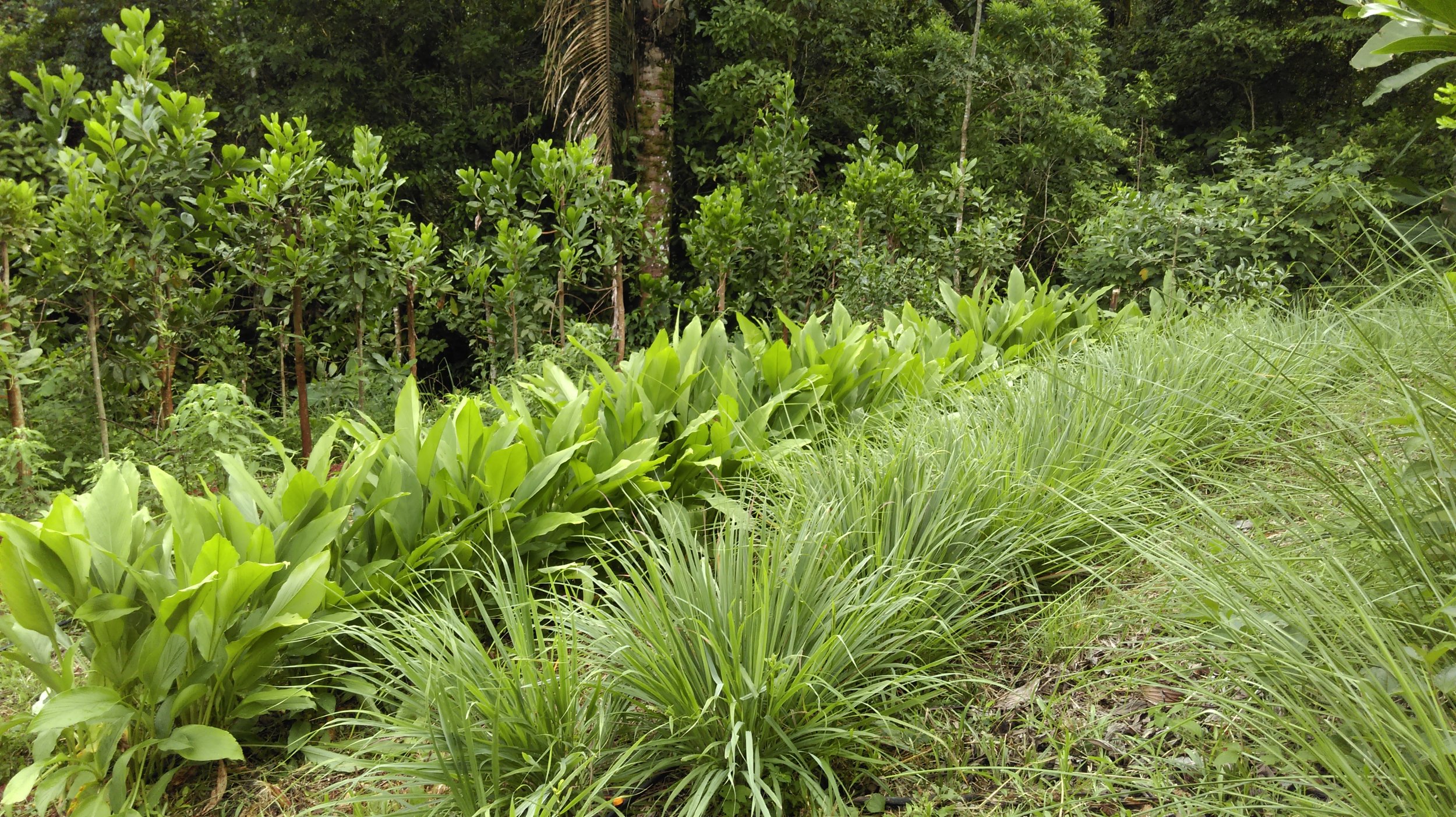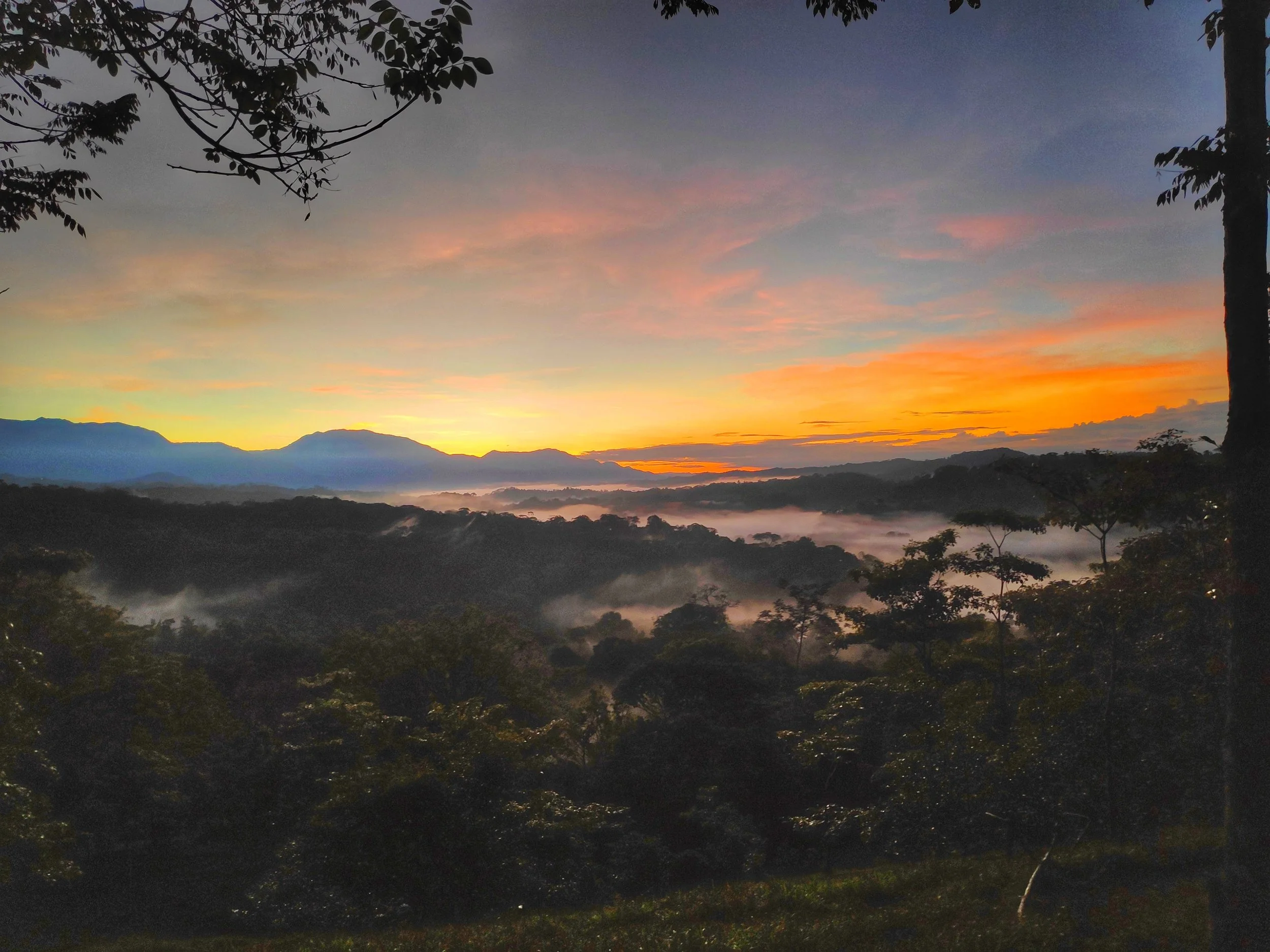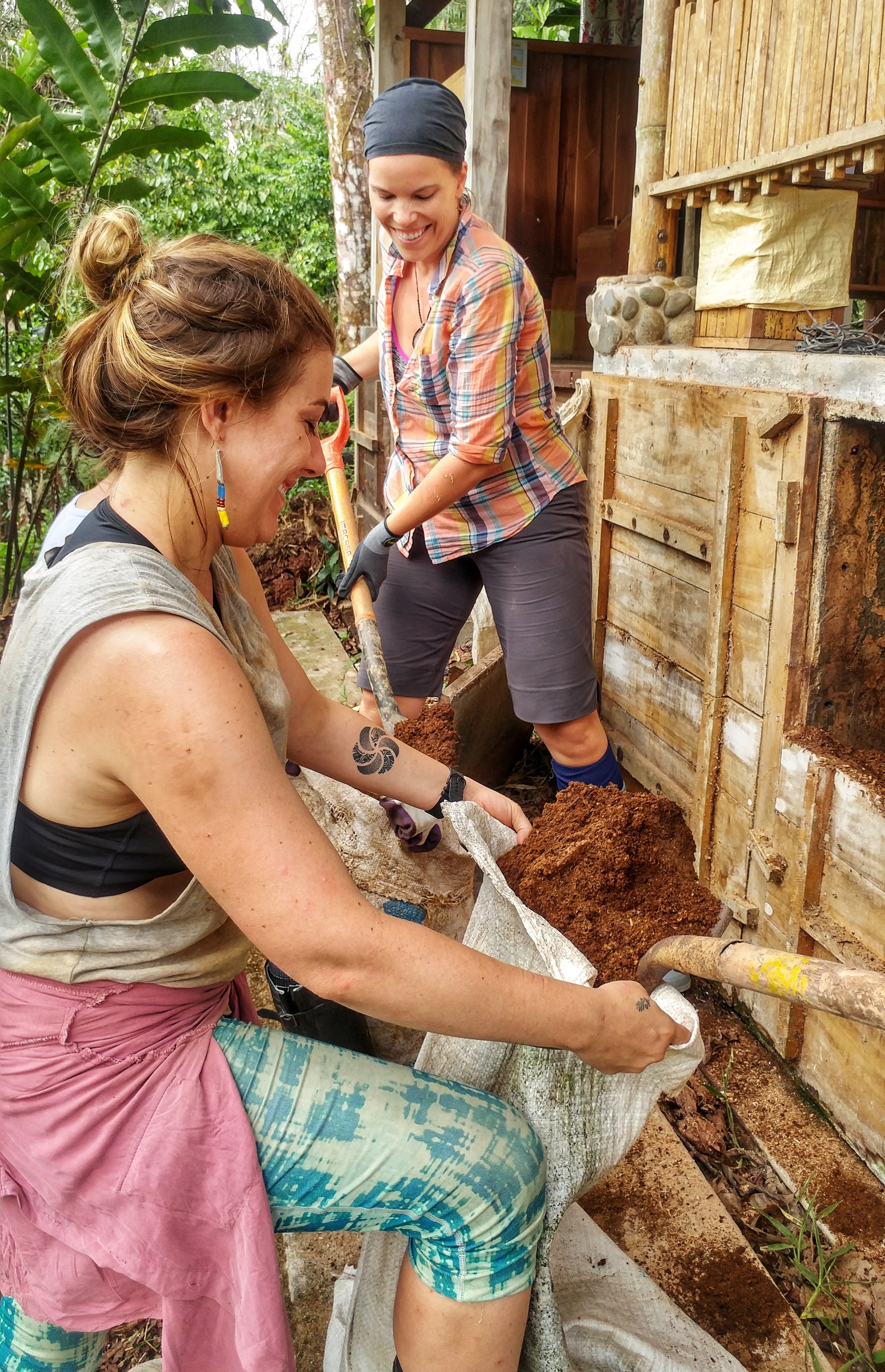La Certificación en Diseño de Permacultura realizada en Rancho Mastatal (PDC en Español) no es solo el resultado de un programa de 88 horas de clases técnico-prácticas, ¡es mucho más que eso!
Permaculture Entrepreneurship: Navigating the Path from Student to Professional
After completing a Permaculture Design Course (PDC), natural building workshop, or any other educational opportunities at a place like Rancho Mastatal, many students find themselves wondering how to turn their newfound knowledge and passion into a career. This transition from student to professional is a common challenge in the permaculture world.
Finding Home in Permaculture
Los Suelos y Su Importancia para la Existencia de la Vida
The Ethics of Permaculture
Are ethics universal, or are they subjective, governed by individual attitudes and circumstances? And if that is the case, how can anyone be sure that they have “good ethics” and are always making the right decision? And by what means can we design a future in which every choice leads to the wellbeing of all humanity and to the wellbeing of the planet?
What is Permaculture
Permaculture is a macro-concept that involves many different topics, methods, systems and ideas. Ideas like moving back to the land, using nature as our guide, applying ecology in our productive systems, reconnecting with the cycles of nature, approaching life holistically, creating stable local economies, regenerating the landscape and our relationships with others, investing in resiliency and interconnectivity; are in the heart of permaculture.
Social Permaculture: The Secret to a Successful Community
The people part of our work is arguably the trickiest. Even though it takes experience, know-how and intelligence to design and install orchards, build buildings, and manage water, I’d say that they all pale in comparison to the work that’s required to create a holistic and healthy human environment in which to live.
How to Optimize Your Syntropic Agroforestry Site
Rancho Mastatal - A Paradigm Shifter
The Ecstasy of Cheese: A Meditation on Our Conceptions of Value
An Interwoven Life
What is Syntropic Farming?
If You Practice Yoga, Practice Permaculture
The Wizard and The Prophet — A Book Review that Resolves the Duel
Permaculture-Based Alcohol Production as an Energy Source — “The Proof is in your Buzz”
Salak: A Productive Understory Crop
Making Compost 101
Making Compost 101
By 2022 apprentice Joshua Wright
Smelly, sticky, messy.
Perhaps these are some words to describe your experience with food waste. But it doesn't have to be! Enter the world of composting!
In permaculture we love composting and would never think about just throwing away our food scraps into the trash, because they aren’t waste, they are resources that will benefit our garden and our planet.
Composting is a great way of dealing with your kitchen scraps, autumn leaf litter and/or lawn trimmings, along with any other organic matter that may be in your garden. Dealing with a “waste” product and turning it into something beneficial. In permaculture we also call this stacking functions.
An apprentice flipping our compost pile
What is compost?
Compost is broken down, decomposed organic matter. It occurs naturally in the environment around us as living things decay. Through human interaction this natural process can be sped up.
Why should you be making compost?
Composting has several great benefits:
It improves soil health. Adding organic matter into soils allows them to better retain moisture leading to reduced irrigation costs. It lends itself to better aerated soils reducing the need to till and it provides habitat for beneficial fungi and micro-organisms to continue the work of decomposition and nutrient cycling.
It provides plants with nutrients essential for their growth. The main elements plants need are Nitrogen (N), Phosphorus (P) and Potassium (K), all of which are present in compost, along with a number of other elements in trace amounts such as Calcium (Ca), Magnesium (Mg), Iron (Fe) and Zinc (Zn).
Composting diverts waste from ending up in landfills and the incinerator. Both of these require lots of energy and resources to maintain and manage, so by composting you are freeing up time, money, and energy for better utilization elsewhere (building an abundant, regenerative future we can be proud of).
When in landfills food waste doesn’t have access to oxygen, becoming anaerobic. When decomposing in this airless environment it produces methane and carbon dioxide. When not in balance with natural cycles these gasses contributes to greenhouse gas overload in our atmosphere adding to our global climate crises.
In summary by composting not only are you doing less bad (by producing less pollution) you are actively doing good (building soil which is essential for a healthy planet)! Win, win!
So how do we go about getting started?
Our little wigglers that we use for our vermicompost!
First, let’s identify the best location: Ideally you will have a spot in your garden that is out of direct sun and protected from the rain. You will need something to contain the compost in. A wire cage or recycled wood pallet box will both work great. But you can use any containment method that is roughly 1m^3 and allows air to circulate. If you are limited in space or don’t have a yard, there are many great DIY options, such as a plastic bin with holes drilled out. Or check out vermicompost, which uses worms to help you out! Check out this blog article from Mother Jones to learn more about using worms to compost in a small space.
Next let’s look at what goes into your compost: We can break this down into two basic categories: "greens" and "browns". "Greens" are materials that contain higher quantities of nitrogen and "browns" contain higher quantities of carbon. Balancing this ratio of greens to browns is what will define the success of your compost operation.
This ideal ratio being 25-30 parts carbon to 1 part nitrogen.
Examples of “greens” are kitchen scraps or fresh lawn clippings. “Browns” can be dried leaves, wood chips, saw dust, etc.
Remembering that there is carbon in ALL organic material including materials that we classify as “green”, we can achieve our ideal ratio (25-30:1) by adding roughly 2 parts “brown” material to 1 part “green” material.
If your compost pile starts to smell, attract flies or is excessively wet add more browns, if it is too dry reduce that amount of brown material you add.
Your compost should have the same moisture content as that of a damp sponge. When squeezed firmly no more than a few drops should come out.
Excellent!
Armed with these basics outlined above you are ready to begin your journey into the underworld (soil).
Keep in mind that there is no teacher out there as good as direct experience so get your hands dirty and have fun with it.
One day, we too, shall be compost. And so closes the circle of life.
Emptying out one of our compost toilets
Other Related Blog Articles
Transforming Human Waste into Fertilizer: Compost Toilets
5 “Grow Your Own” Mulch Plants
Learn More
Join us for one of our educational workshops about permaculture design, natural bulding, fermentation, and more. Check out our yearly workshops here.
Beyond Cacao: The Fruit(s) of the Gods
Like cacao, these trees produce a fruit filled with delicious pulp and seeds and have proven to be amazing additions to our culinary experiments. These pre-Colombian species are still grown on a relatively small scale and have retained significant genetic diversity. They provide hope for a more diverse tropical forest system and chocolate industry.
Amending Calcium-Deficient Soils – A Tropical Permaculturist’s Approach
Amending Calcium-Deficient Soils – A Tropical Permaculturist’s Approach
By 2022 apprentice Connor Gilmartin
A walk through our orchard systems
Wade Davis once wrote that the Kogi people of Columbia believe “The surface of the Earth itself is an immense loom upon which the sun weaves the fabric of existence”. The garden and orchards of Rancho Mastatal are proof of this eloquent observation. While walking through the orchard spaces of the Ranch, your field of vision is overtaken by a mosaic of emerald green foliage, and gem-like, plump tropical fruits. This intentionally designed agroforest is abundant - however, a productive tropical orchard or garden does not come without hard work. Without mindful intervention, these orchards and gardens would not reach their fullest potential. It is our goal to listen to Madre Tierra, and help her achieve her most resilient, healthiest form.
Tropical Soils
While the jungle soils of Mastatal are abundant in in biodiversity, they are lacking in potential hydrogen (pH), which results in acidic soil. This low-pH, high acidity soil presents a bit of a problem for a gardener like myself, who is keen on optimizing a plant’s growing medium, in search of nutrient-dense, boast-worthy fruits and vegetables. Simply put, acidic soil results in low levels of available calcium. It is a known fact that calcium plays a crucial role in plant health and development. So… how can we remedy this issue? I’m glad you wondered.
A tropical permaculturist in this predicament is faced with two options; purchase bulk calcium carbonate in the form of ground limestone to apply as a top dress, OR use all those eggshells sitting on the top of the compost bucket to make Water-Soluble Calcium (WCA). WCA is one of the five inputs developed by Master Han Kyu Cho, the prolific South Korean gardener responsible for what is known globally as Korean Natural Farming (KNF). I’ll note that topdressing with limestone (CaCO3) does play a role in our agroforested zones - foliar feeding 12 acres of orchards would be unrealistic, to say the least. Foliar feeding a quarter acre of raised garden beds is a different story. Preparing WCA is fulfilling and presents a phenomenal opportunity to help close the loop between your garden and kitchen, while also providing your plants a calcium-rich tonic they’ll thank you for. When you see your pepper’s shiny leaves praying towards the morning sun, you’ll see what I mean.
How to Make Water-Soluble Calcium
I’ll begin by listing the materials you’ll need to make a batch of Water-Soluble Calcium (WCA). They are as follows;
1.) Two clean glass jars (I am personally Ball Brand loyal, but any clean glass jars will do)
2.) Eggshells (Rinsed after cracking to remove organic matter)
3.) Brown Rice Vinegar (3% acetic acid is what you’re shooting for if you make your own vinegar like we do here at the Ranch)
4.) A cast iron skillet
5.) A breathable cloth to act as a “lid” (cheesecloth or nut milk bags work quite well)
Washed egg shells and homemade bottles of vinegar
One of our alternative wood fired cooking stoves
I chose not to list specific quantities of eggshells and vinegar because the amount of WCA you might want or need is variable, depending on the size of your garden space or application schedule. By weight, the solution will be prepared using a ratio of 1:10 (eggshells to brown rice vinegar).
To prepare the WCA solution:
1.) Collect eggshells, gently wash with water after cracking.
2.) Lightly roast the cleaned, dried eggshells in a cast iron skillet for approximately 30-45 minutes. This removes any potential leftover organic matter stuck to the shell. Shells should be dry and toasted golden but not charred.
3.) Add toasted shells to a glass jar filled with brown rice vinegar. You will see carbon dioxide being released as the eggshells float up and down the vinegar. This is good. This is a sign the calcium is being dissolved into the solution.
4.) Cover your jar with a breathable cloth. This prevents pests or large organic matter from entering your prized water-soluble calcium solution.
5.) Place jar in a cool, dry location for 7 to 10 days.
6.) After this time has passed, check to see if the solution is still bubbling. If it’s not, that means your solution is saturated and all set for the final step.
7.) Strain your solution into a clean glass jar to remove eggshells. Cover with airtight lid, label, and store at room temperature out of direct sunlight.
Toasted egg shells
Egg shells sitting in vinegar
Voila! A week has passed and now you have a jar of homemade water-soluble calcium. You must be excited to go give your plants a taste. I’d recommend doing so in the early morning. Greet the sun, sing to your plants, and remember, your mind is a garden, your thoughts are the seeds, you can grow flowers, or you can grow weeds. Happy gardening!
Want to learn More?
We have been applying permaculture principles to our agriculture systems for the past two decades. Join us for our yearly Permaculture Design Certification to learn more about designing and implementing sustainable tropical systems.
Check out these past blogs on Tropical Agriculture
Tips for Working with Tropical Soils
Using Mountain Microorganism to Create Organic Fertilizer




























